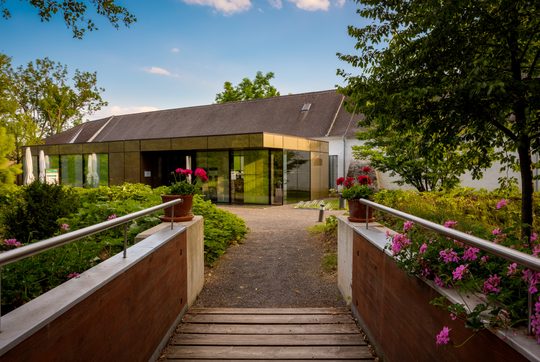The Quarry in St. Margarethen

In the first half of the seventeenth century, the domain of Eisenstadt was transferred to Count Nicholas (Miklós) Esterházy (1583-1645). Thus, the township of St. Margarethen, which belonged to Eisenstadt, was part of the land to be administered, and the quarry located there provided material for a variety of building projects. Indeed, sandstone had already been used ever since the Gothic era – for instance to build St Stephen’s Cathedral in Vienna, but also for its restoration, which still continues today; furthermore, St Margarethen sandstone was used for the development of the Vienna Ringstrasse buildings.
In 1959, Karl Prantl initiated the “Symposium of European Sculptors”, and until 1977 it came to be the setting and inspiration for their works of stone. The numerous stone sculptures exhibited in the quarry have transformed the terrain around the Roman quarry into a unique landscape. And not least of its fascinations is its breathtaking panorama, which stretches from Eisenstadt, over the Leithagebirge mountains and the Neusiedlersee to Rust and into the Pannonian plain of Hungary.
Today, the quarry in St Margarethen is one of the most beautiful and imposing open-air arenas in Europe, which under the Esterházy Family Private Foundation has been subject to a comprehensive development of its festival complex since 2006. In doing so, the creative and committed AWG architects group demonstrated fine-tuned sensibility – notwithstanding their exciting architecture – in reshaping this highly sensitive natural space. More than ten successful years have passed from its rediscovery in 1997 by Intendant Wolfgang Werner as an extraordinary festival stage to the present radical redevelopment of this unique natural arena.





